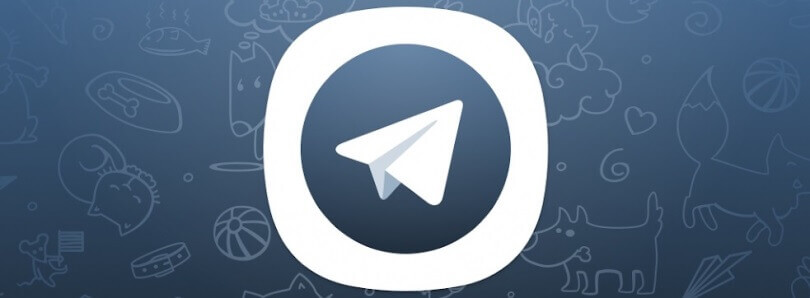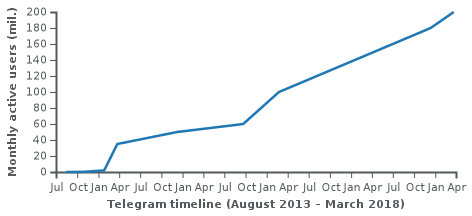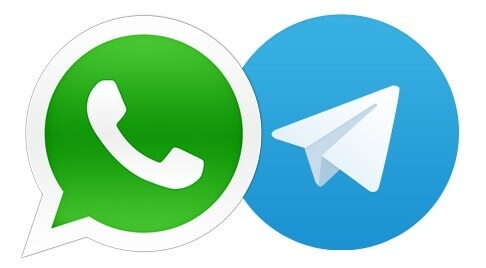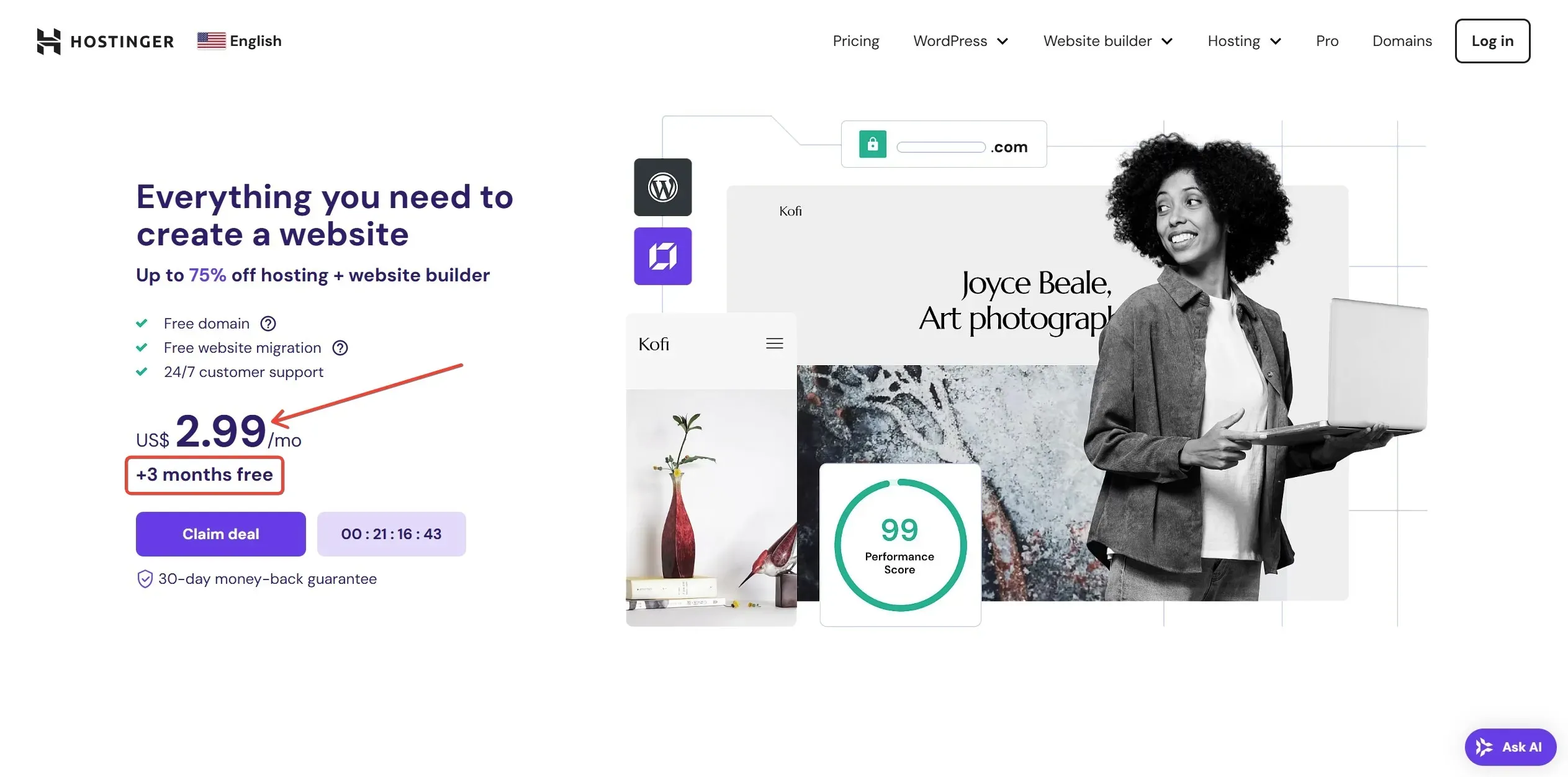You’ve probably heard about the Telegram vs WhatsApp battle if you’re from this planet.
This post outlines the significant differences and similarities between the two messaging apps, and why Telegram is better WhatsApp.
I hope this serves as a guide in making the decision on which one to use.
Quick fact: WhatsApp is the most downloaded messaging app in the world!
With over 1.5 billion monthly users, this messaging app is unrivaled in terms of users, when it comes to the famous Telegram vs WhatsApp discussion.
So does this mean that WhatsApp is the better option? Oh no…far from it.
I will leave this infamous quote here;
Just because everyone is using it, doesn’t mean it’s the best.
– JIMOH Ibraheem .B
I hope you get the message. Moving on…
Table of Contents
History – Telegram vs WhatsApp
Firstly, let’s take a look at their history and take a sneak peek on how it all started.
WhatsApp Wiki
![Telegram vs Whatsapp - Why Telegram is Better than WhatsApp [2023 Comparison] 1](https://techoclock.com/wp-content/uploads/2019/11/whatspp.jpg)
WhatsApp was founded in 2009 by two former employees of Yahoo, Brian Acton and Jan Koum. The idea of WhatsApp struck them when they both got an iPhone and saw the vast potential of the App Store.
At one point, Brian and Jan had their application rejected when they applied for a job at Facebook.
It wasn’t until later they decided to change the face of the Instant messaging app in the industry.
Building the app they wanted was a huge task, and they knew they could not do it alone, so they hired a decent coder from RentACoder.com.
The Russian developer they hired helped build the first version of the app. But it kept crashing, and Koum almost gave up. Months after, Apple pushed an update to their software which introduced push notification, a feature that shows alerts even when an app is not in use. This feature alone made it possible for WhatsApp to notify users when a friend’s status has changed.
In June 2009, Koum decided it was time to register WhatsApp officially, which he did in the state of California. He named it Whatsapp because it rhymes with what’s up. Alas, WhatsApp 2.0 launched, over 250,000 users started using the app a few months after its launch.
Fast forward to four months later, Acton persuaded five employees of Yahoo to back WhatsApp up with seed funding, and they all came on board.
After taking this bold move, Acton joined the official WhatsApp team and got a stake in the company.
Months later, the Blackberry version followed, and WhatsApp’s user base keeps increasing till date. No messaging app in the world can match the user base of this beast in terms of users.
Initially, WhatsApp was a free service to all, but it decided to change its model to be able to afford the cost of sending verification texts to users.
With so much promise, Sequoia Capital, a venture capital firm in California, invested around $8 million in exchange for a 15% stake in the company, and another 50% million when they recorded 200 million active users.
Three years later, with venture capital financing valued at about $1.5 billion, Facebook acquired the company for $19 billion. Sequoia made over 5000% ROI from the deal.
Enough about WhatsApp, let’s talk about Telegram.
Telegram Wiki

Telegram was created four years after WhatsApp initial release date by the brothers, Nikolai and Pavel Durov. The two brothers, before Telegram had earlier created a Russian Social network, VK. But their reign at VK was short-lived after the Mail.ru group acquired it.
Nikolai created the MTProto protocol, the foundation of the app, and Pavel provided serious funding from his other startup, which he helped co-found.
Although Telegram states that it wasn’t built to generate money, the company structure does not appear as a Non-profit Organization.
Telegram is a more privacy-focused company, and to further boost security; it’s registered as both an English LLP and American LLP. A proper step to reduce pressure from the Government.
The Telegram team of 15 developers is always moving from country to country. As at the time of writing this post, the team is currently in Dubai.
Now here is where it gets fascinating. ↓
As of October 2013, Telegram had a user base of 100,000. By March 2014, it announced it has grown to 35,000,000 monthly users, and around half of them are active daily users.
At one point, the South Korean government pushed many of its citizens to join the Telegram app. By December 2014, it announced that about 50 million active users now use the app, and they send about 1 billion messages daily. Also, nearly 1 million people join the app every week!
Telegram traffic doubled five months after that, with over 2 billion messages sent every single day.
In September 2015, It announced that they now have more than 60,000,000 active users with over 12 billion messages sent daily.
In the second month of 2016, Telegram announced over 100,000,000 monthly active users, and 350,000 daily signups. By December 2017, that number had increased to 180,000,000 monthly active users.

Come March 2018; they announced 200,000,000 monthly active users. And exactly a year after that, Pavel said Telegram now gets 3 million daily sign-ups.
Although the main reason for these massive signups is unknown, the time matches the period when Facebook and family, including WhatsApp, had a series of glitches and data leak problems.
Telegram vs WhatsApp

Before answering some of the most popular questions about Telegram vs WhatsApp below, let’s talk about how these apps compare against each other.
Sending Messages
Telegram is a cloud-based messaging app, which means that your messages are encrypted and stored on the server. The advantage of this is that you don’t need to worry when you lose your phone. You can always log in to Telegram via any device, and all your messages will still be there for you.
WhatsApp, on the other hand, uses end-to-end encryption throughout their messaging app. What this means, is that all messages sent are locked with a key, and only the receiver’s device has the key to unlock the messages received, including media files.
Sending Media Files
Posting images on WhatsApp can be annoying sometimes. The largest file you can post on WhatsApp is 100MB (Applies to Documents only), and it also compresses your images; thus, you lose picture quality.
On Telegram, the biggest file you can share is 2.0GB. It also gives you the option to compress before sending, or you can send it uncompressed.
Using Groups
Telegram did a great job with their group feature. Although, the default number of users you can add is 200. Once you exhaust that, the group transforms automatically into a supergroup and allows up to 200,000 users.
Supergroup gives the admin more features and control over the group. You can use a link to join a group, get added manually, or search for the group in the app and join. The admin has complete control over who can join.
As for WhatsApp, you can only join a group if manually added or sent an invite link. Also, the highest number of users you can add is 256. That’s too small.
Adding Contacts
Both Telegram and WhatsApp need you to register your phone number for you to use their service. On WhatsApp, you have to give out your phone number to a stranger to reach the person. But with Telegram, you can share your username, that’s all you need to start chatting. You also have the option of sharing your number, but that’s up to you.
Why is WhatsApp Special?
Read Receipt – Almost every messaging app I’ve used, including WhatsApp, notifies you when a message has been delivered and read by the recipient. But Telegram does not have this feature.
Media Status – This is hands down the most interesting, and arguably the most used WhatsApp feature of our time. Unlike the traditional text-only status with very limited characters, WhatsApp media status allows you to share media files and longer text (700 characters) with your friends.
Media statuses are not permanent, though. They auto-delete after 24 hours, and only friends with mutual contacts on their phones can see each other’s statuses.
End-To-End Encryption – As explained above, the WhatsApp end-to-end encryption feature is available throughout the app. This feature is only available with the secret chat mode on Telegram.
Related post: How to use WhatsApp on PC.
Why is Telegram special?
Username – I mentioned above that you could chat with anyone without needing to share your phone number. You can do this using a URL in this format: t.me/username.
Secret Chat – Got photos or images you’d like to share with your friend but you don’t want them to have a copy?
With secret chat, all the messages you send will auto-delete after the time set expires. Saving media files is impossible in this mode and users are prevented from taking screenshots.
Voice Chat – Similar to WhatsApp voice call, you can call your friends and family on Telegram. And you add up to 5,000 participants in a voice chat.
Silent Mode – This is a convenient feature if you’re the type that loves late-night chats or sending messages during work hours. Say you want to leave a message without sound, in case the receiver is sleeping or busy, hold down the send button. That’s all.
Channels – If you’ve used Blackberry messenger before, then you should be familiar with the concept of a channel. Channels are like groups but with unlimited user capacity. Only admins and selected users can post content in channels.
Cross-Platform – Telegram client is available on most operating systems. You can also access the web version using your browser.
Bots – I don’t know if I mentioned that Telegram allows you to build your own Telegram client. Another impressive feature is the bot. Bots are small Artificial Intelligence programs that enable you to automate things like; auto replying to your customers without your presence or automate things in general.
Edit Messages – Aside from the fact that your messages are forever available, even if you lose your device, you can also edit your messages at any time. So you don’t have to delete your messages just because of that small typo.
File Type – When sending files on WhatsApp, aside from the fact that you can only send a 16MB file at once, There’s a limitation on the type of data you can share. On Telegram, you can send any file-type and up to 2.0GB.
Many Sessions – Unlike WhatsApp, Telegram allows you to add multiple accounts on a device, you can also use your account on various devices.
Appearance – Telegram allows users to customize the app interface. You can different themes and app icons too. Don’t forget to try the night/monochrome theme.
Unfortunately, the only thing you can change on WhatsApp is the chat wallpaper. You’re forced to use the default light or dark theme, depending on your device.
Language – Telegram allows users to change the app language, so you’re not forced to use your phone language. This feature will come in handy if you travel a lot.
Animated Stickers – Back in 2015, Telegram launched a format for Stickers which later became the industry standard. In 2019, they launched another new form of stickers. Ladies and gentlemen, I present to you, Telegram Animated Stickers!

Programmed Emojis – Just when you thought you have seen it all, Telegram decided to launch emojis you can interact with. For example, you can send a basketball emoji to your friends and they will be able to dunk the ball in the net. Just for the fun of it.
Video Editing Tools – You can also decide to edit your images and videos before sending them to your contact. There are a lot of fun tools to play around with.
Disappearing Media – If you’d like to send a photo or video to your contact but don’t want them to keep a copy, you can use this feature to automatically delete your media once it’s viewed. Your contacts will be prevented from downloading the file or taking a screenshot.
Polls – You can decide to ask your subscribers questions using the poll feature. You can also choose to show the results or keep it hidden.
Pinned Messages – You can pin multiple messages at the top of any chat. This allows you to keep important messages at the top of your chat. You can also pin messages in groups and channels for your users. You have the option to notify them or not.
Phew! That was very lengthy. Now let’s answer some of the most popular questions relating to Telegram vs WhatsApp below. ↓
WhatsApp FAQs
Can WhatsApp be Hacked?
Because there have been reports of data breaches on WhatsApp, I won’t say that it is unhackable. As we all know, there’s no such thing as 100% security. Even the parent company, Facebook, had its users’ data comprised some months back. So yes, WhatsApp can be hacked!
Your interest in the question above might be in two ways, though. One, if you’re looking to hack someone or spy on your girlfriend. Or two, you want to learn how not to become compromised.
Can you hack someone’s WhatsApp?
No! If you’re looking to hack someone with the tutorials or tools you find online, you might end up getting hacked yourself. Why? Well, because most of the hacking software you see online have malware and viruses hidden in them. So, don’t bother trying them!
How to Not Get Hacked on WhatsApp?
Don’t worry, as long as you don’t give your phone out to someone you don’t trust; then you should be fine. A friend argued that a hacker can read your messages by copying the WhatsApp chat database and the encryption key from your phone. I’ve not verified this, but it kind of makes sense.
Although, only a jailbroken IOS device gives the user access to the file system. On Android, the file system is open to everyone holding your device. So be careful who you give your phone to, android users.
To protect yourself; enable the passcode/fingerprint option on WhatsApp by going to: Settings > Account > Privacy > Screen Lock.
You can also enable WhatsApp’s two-factor verification to protect yourself further. This feature will require you to use a six-digit pin anytime you want to use WhatsApp on a new device. If you forget it, you can always recover it with the email address used while setting it up.
Here’s how to enable WhatsApp’s two-factor verification. Go to: Settings > Account > Two-factor Verification.
How does WhatsApp make money?
This question has caused a lot of debate in online forums and communities. WhatsApp doesn’t sell ads, and if we go by a quote from the 70s that reads;
If you are not paying for the product, you are the product.
I think it’s fair to say that the users might be the product here. WhatsApp cost Facebook, $19 billion, and it’s a fact that WhatsApp shares data with Facebook to help improve Facebook ads. And in January 2021, Whatsapp announced a deeper integration with Facebook. After the announcement, Telegram downloads across all platforms skyrocketed.
How do I find a group on WhatsApp?
Except you get an invite link to join or manually added by an admin, It’s impossible to search and join a group on WhatsApp. Search and entering of groups is possible on Telegram, though.
Why should you use WhatsApp?
The question above is a viral question and surprisingly, a lot of people don’t even know the use. You’ll be surprised to know that many people out there still prefer conventional SMS, for instance, my uncle.
The truth is that WhatsApp saves money. You can connect more with your friends, send product pictures to customers, and so on.
If you need more reasons, read this post from the beginning.
Can I unblock myself after getting blocked on WhatsApp?
The question above is not very popular, but it’s worth answering. The scary truth is that the only way to unblock yourself after getting blocked is to delete your WhatsApp account, then sign up again. It sounds terrible, I know, but it works.
Telegram FAQs
Is Telegram open source?
The best way to put this is that telegram is 50% open source. The reason why I said this is that the client-side (frontend) of Telegram is open source, but the server-side (Backend) is 100% closed source.
How does Telegram make money?
According to Telegram, the only way it generates money is through donations from investors. If they run out of funds, they will ask users to donate, but the contributions will not be compulsory.
What is the difference between Telegram and Telegram X?
Telegram is the regular messing app everyone knows in the App store. Telegram X, on the other hand, is an alternative client-side application. It has all the new features like animated stickers, faster speed, account manager and gestures. It’s more like a beta version of the main app.
While Telegram X is still available as a standalone version on the Google Play Store, it has been discontinued and merged on the Apple App Store.
Is Telegram more secure than WhatsApp?
I mentioned above, the different measures Telegram put into place to increase security. Unlike WhatsApp two-layer encryption, Telegram has three encryption layers.
Some of the measures put into place by Telegram include; Secret chat, password protection, MTP protocol basis, and so on.
To prove to consumers that their data is safe, Telegram announced a $300,000 prize to whoever bypasses their encryption. The contest closed three months after with no winner. So yes, Telegram is more secure than WhatsApp.
If you are a fan of privacy and security like I am, this answer alone can be the most critical factor in choosing the winner of the Telegram vs WhatsApp battle.
![Telegram vs Whatsapp - Why Telegram is Better than WhatsApp [2023 Comparison] 2](https://techoclock.com/wp-content/uploads/2019/08/telegram-hack-contest.jpg)
Conclusion
I think I have done justice in showing you how these apps compare against each other, and who the winner of the battle between Telegram vs WhatsApp is.
So, choosing one shouldn’t be a problem for you. But in my opinion, Telegram is the best messaging app in terms of security and features. I still use both on my phone, and nothing stops you from doing that too.
But one thing I stopped doing, is to stop sharing sensitive information on WhatsApp because I don’t really trust Facebook.
If you love this article about Telegram vs WhatsApp, share this post and leave a comment below.
Cheers!
![Why Telegram is Better than WhatsApp [2023 Comparison]](https://techoclock.com/wp-content/uploads/2019/08/whatsapp-telegram.jpg)





Frank
I haven’t used these apps for a long time. I found an alternative to them and it works great. I’m talking about Utopia p2p. It allows me to communicate and share information easily and securely.
Jimoh Ibraheem Babatunde
Haven’t really heard of Utopia. Will definitely check it out.
Thanks
Alan W
The article’s unique approach in analyzing the features, security, and user experience of both Telegram and WhatsApp was refreshing. It presented a balanced viewpoint, highlighting the strengths and weaknesses of each platform without bias. Additionally, the inclusion of user testimonials and real-life examples added credibility to the article’s content. I appreciate how the article emphasized the importance of individual preferences and priorities when choosing a messaging app, ultimately empowering readers to make an informed decision based on their specific needs. Overall, this article is a valuable resource for anyone seeking to understand the key differences between Telegram and WhatsApp, and I highly recommend it.